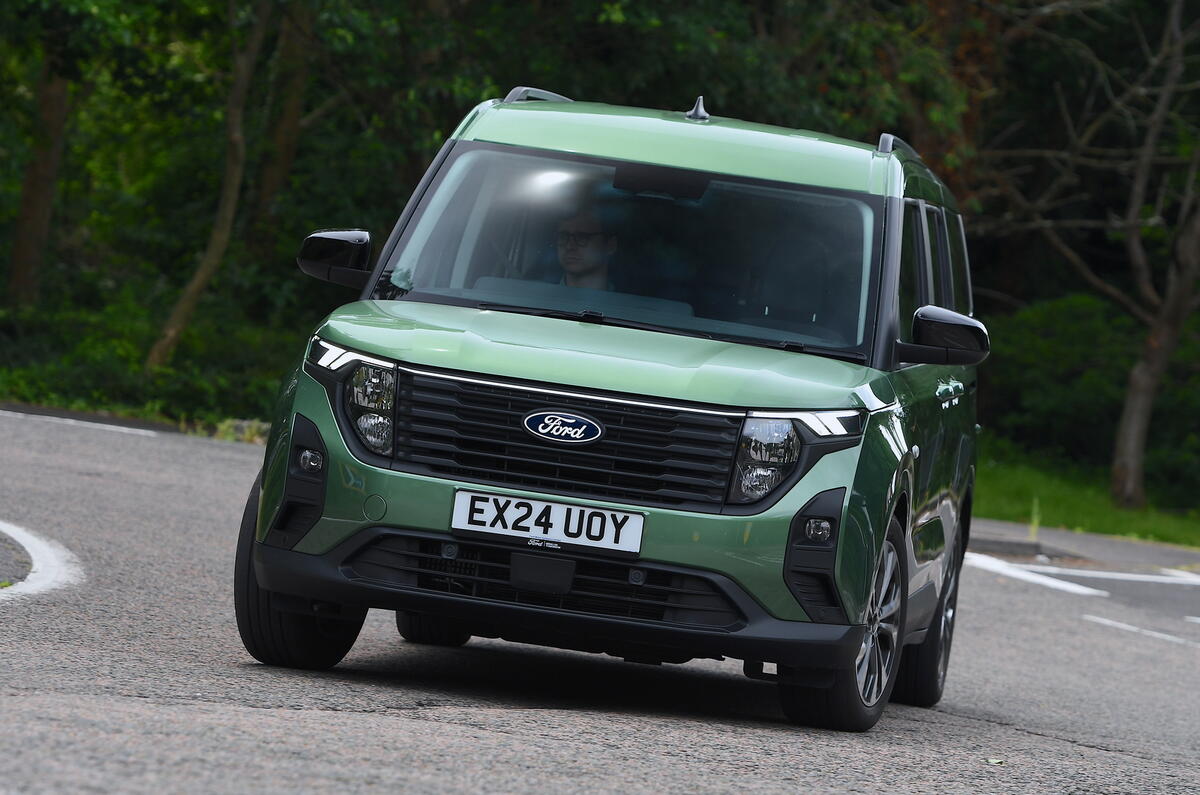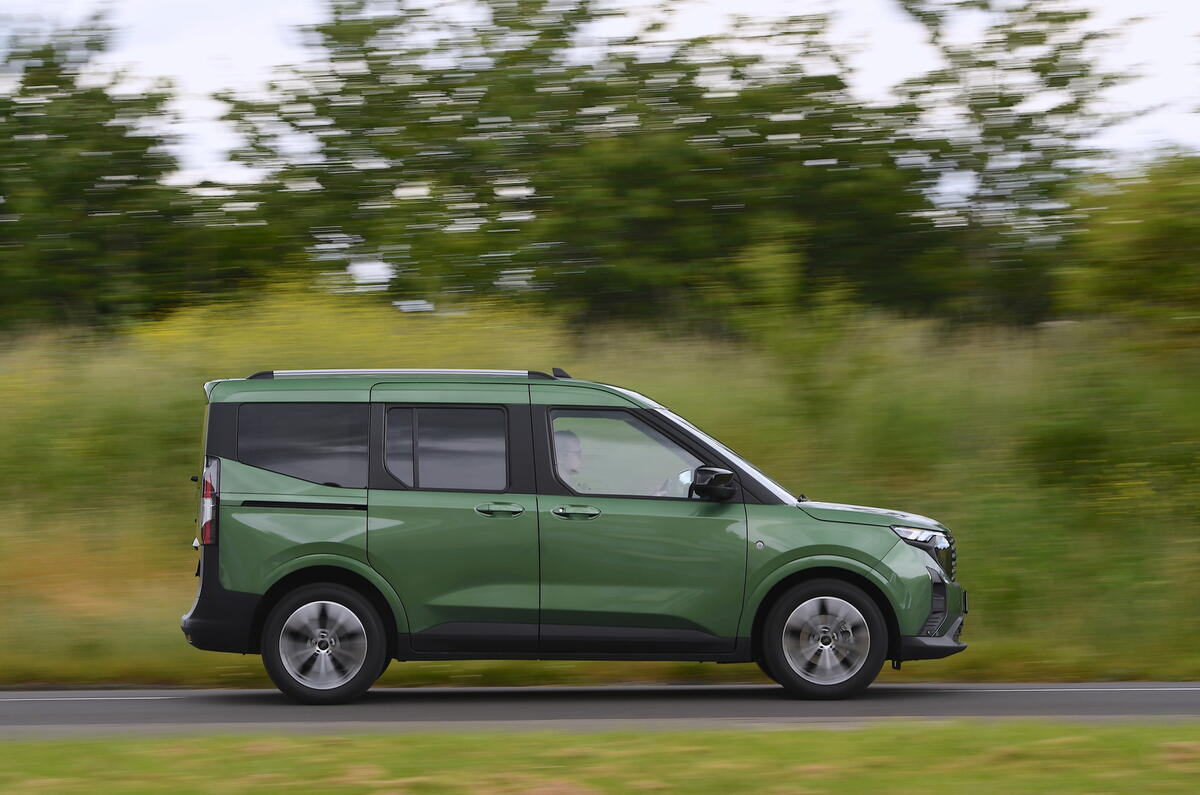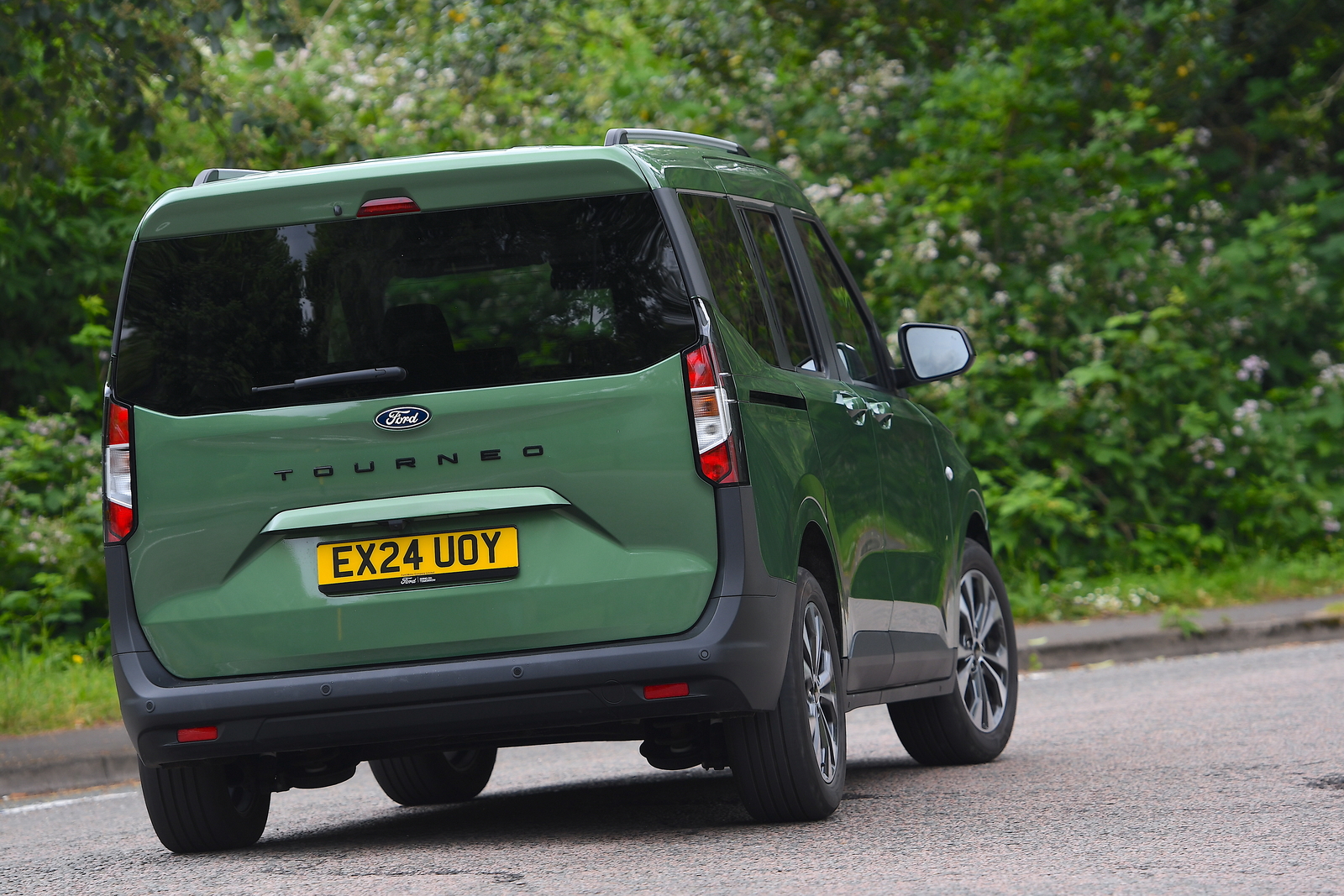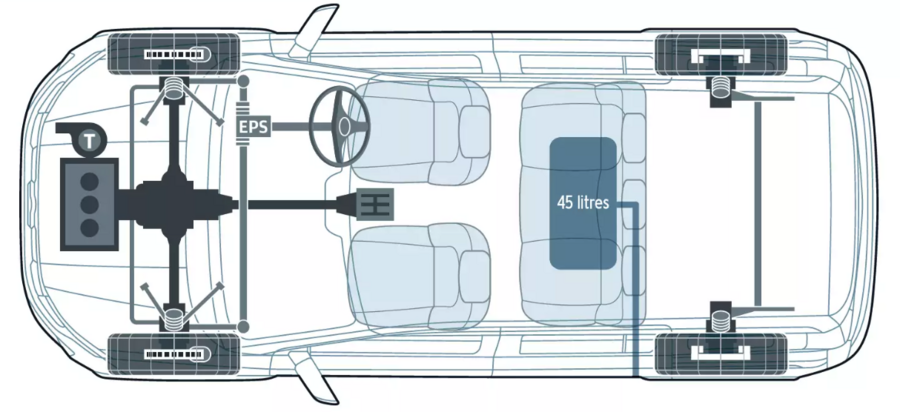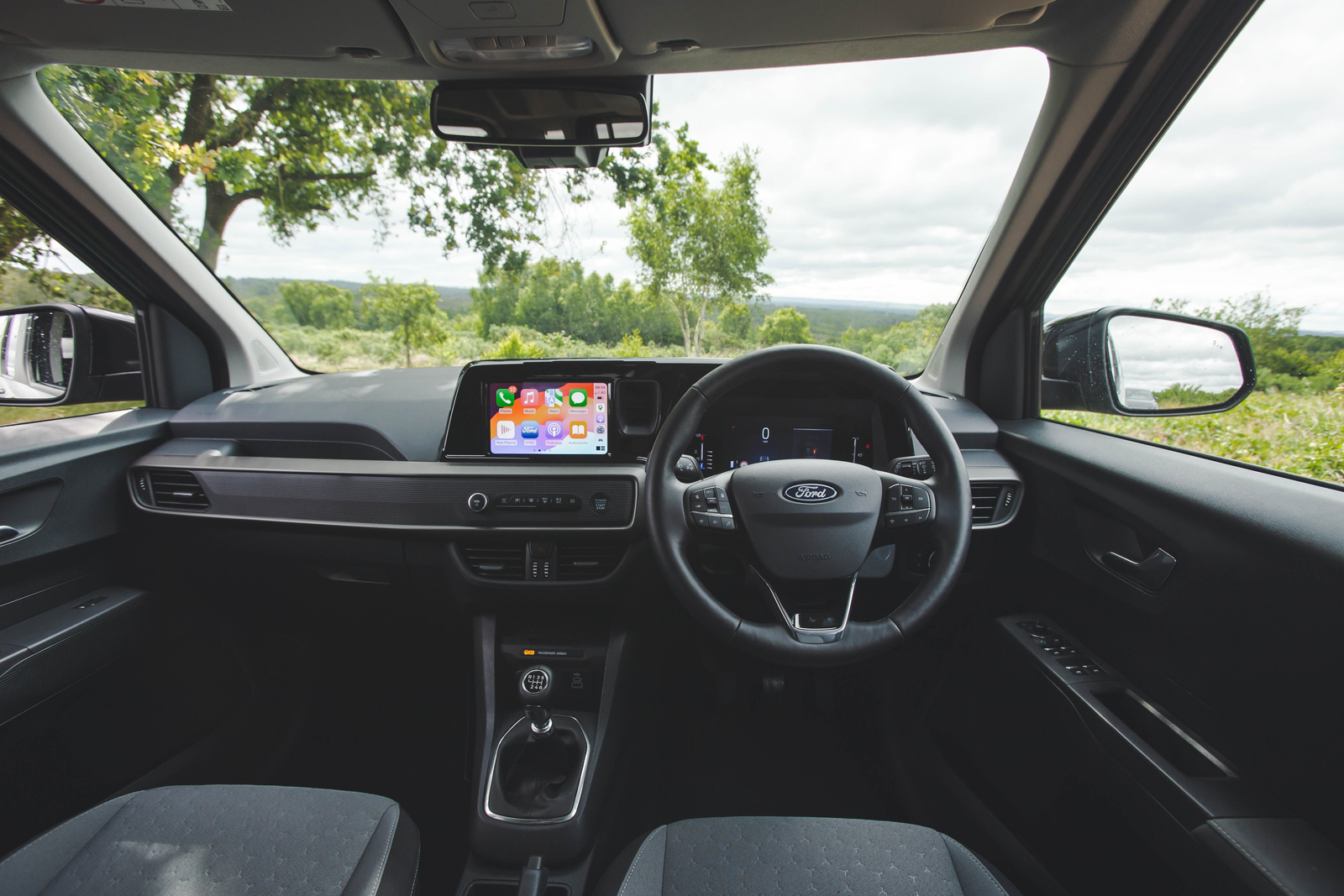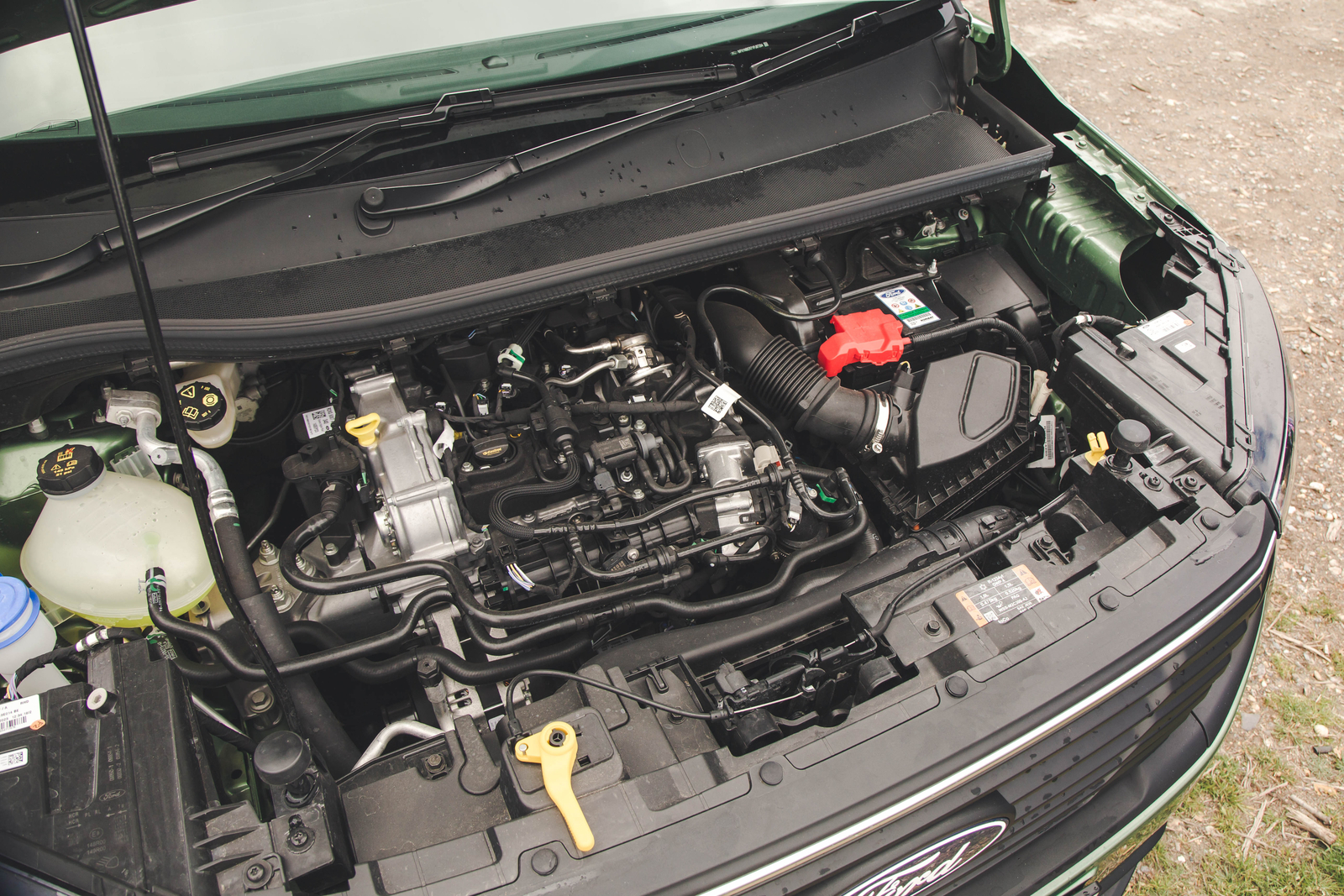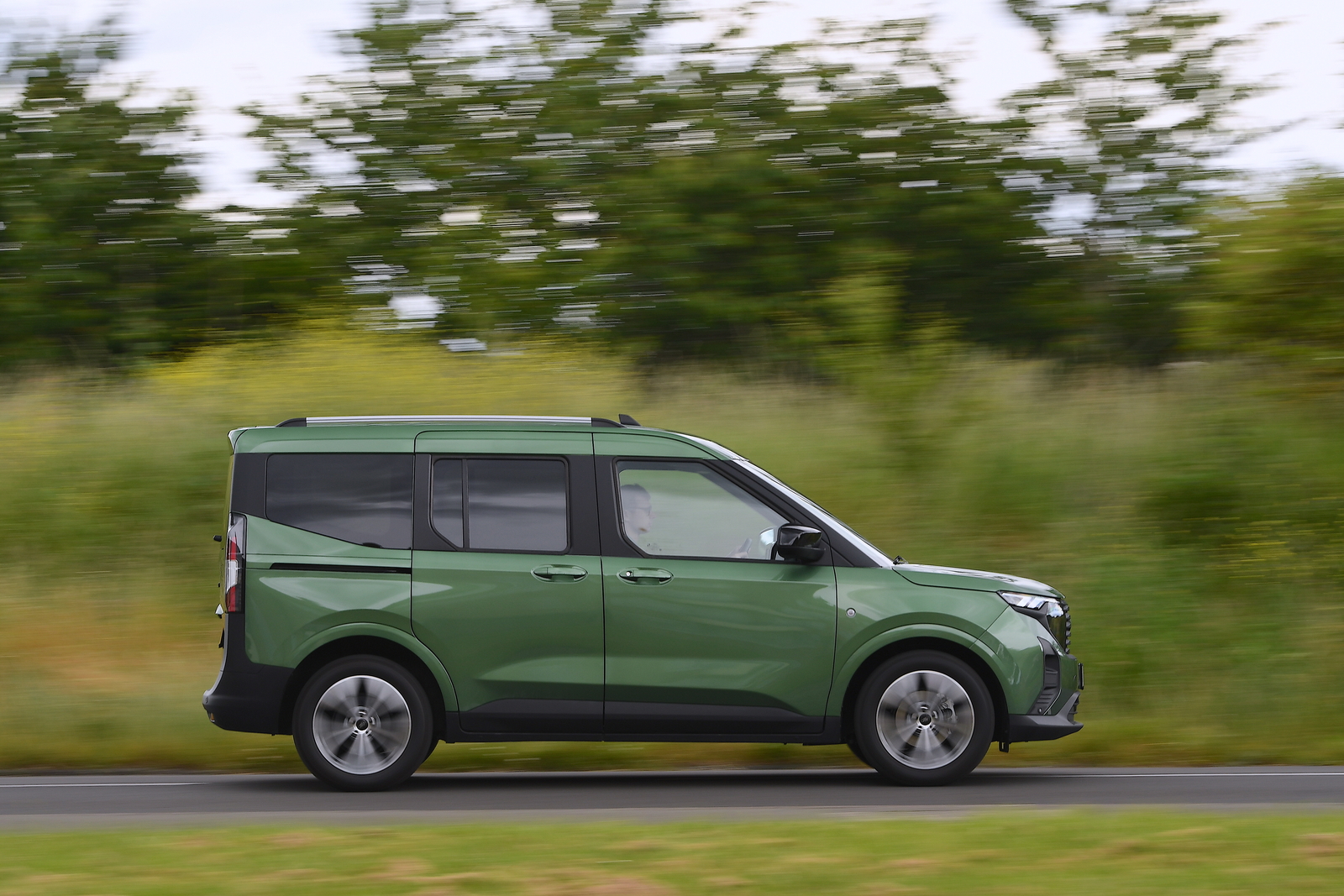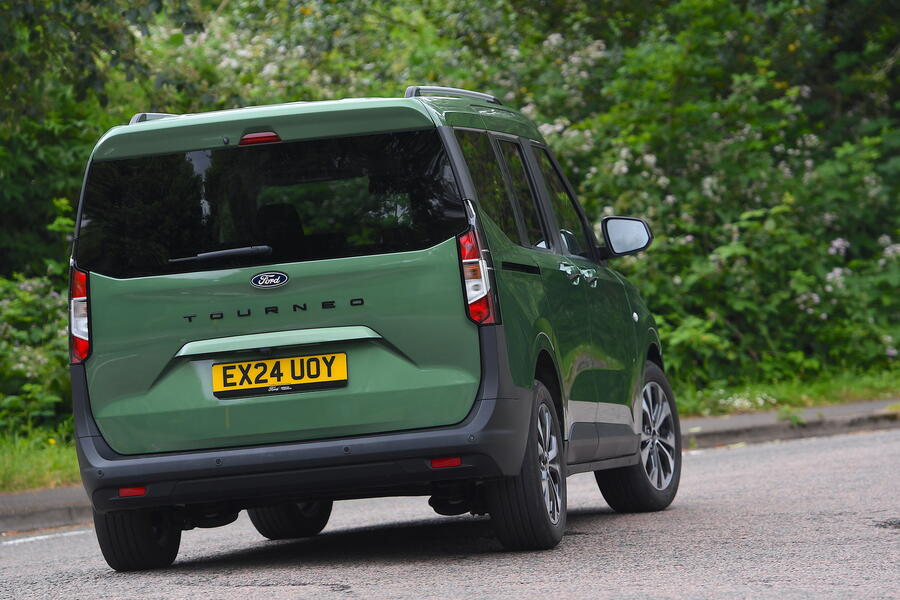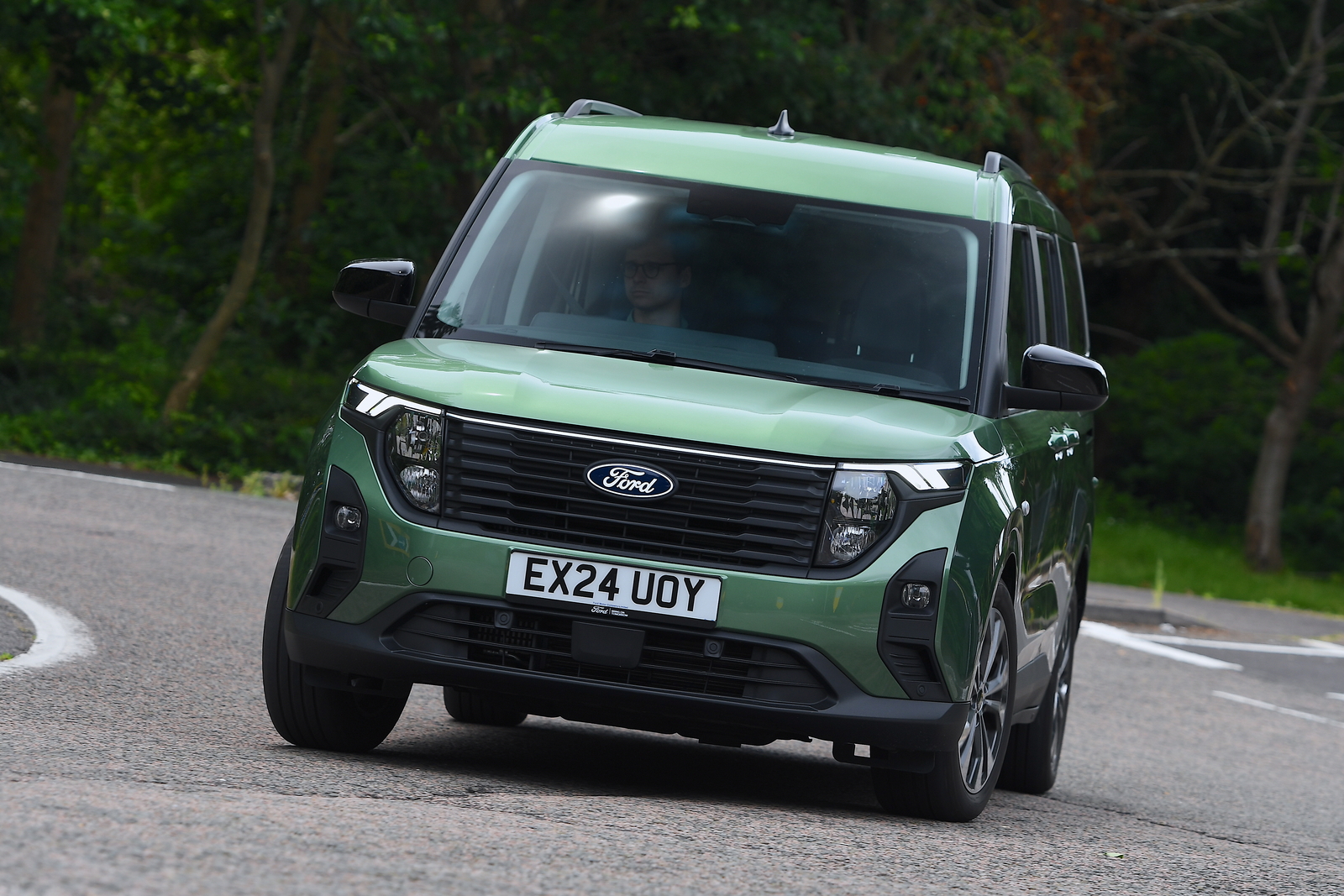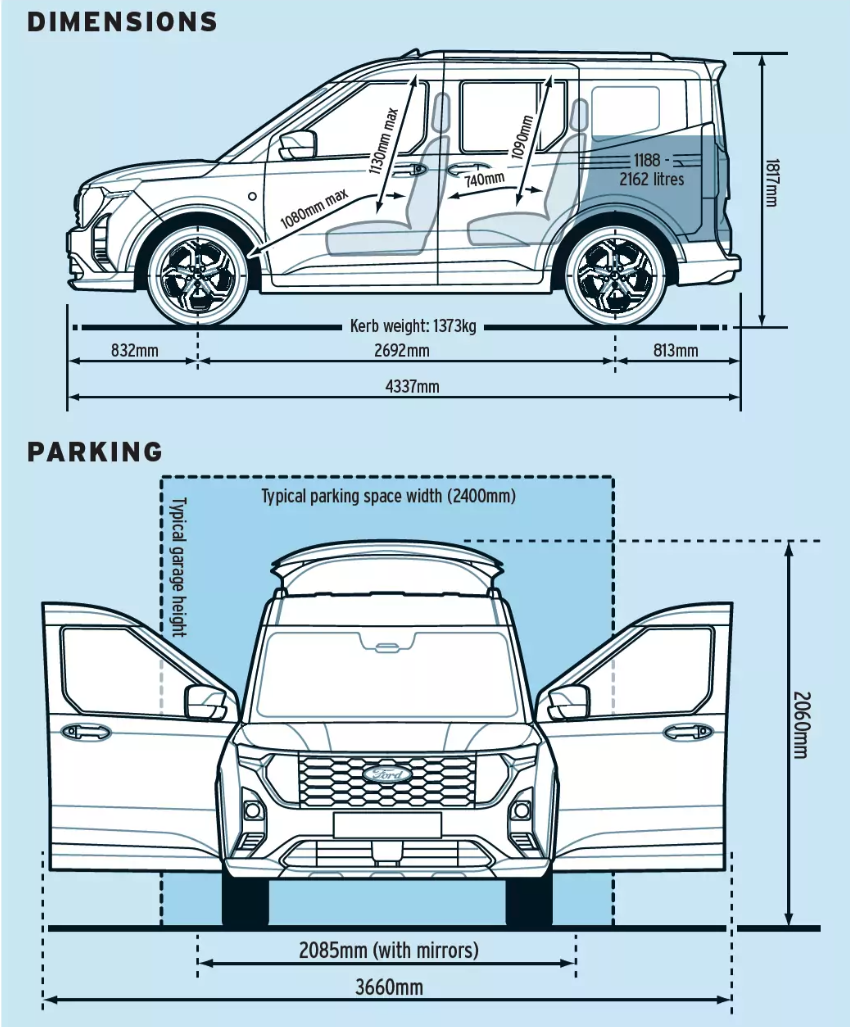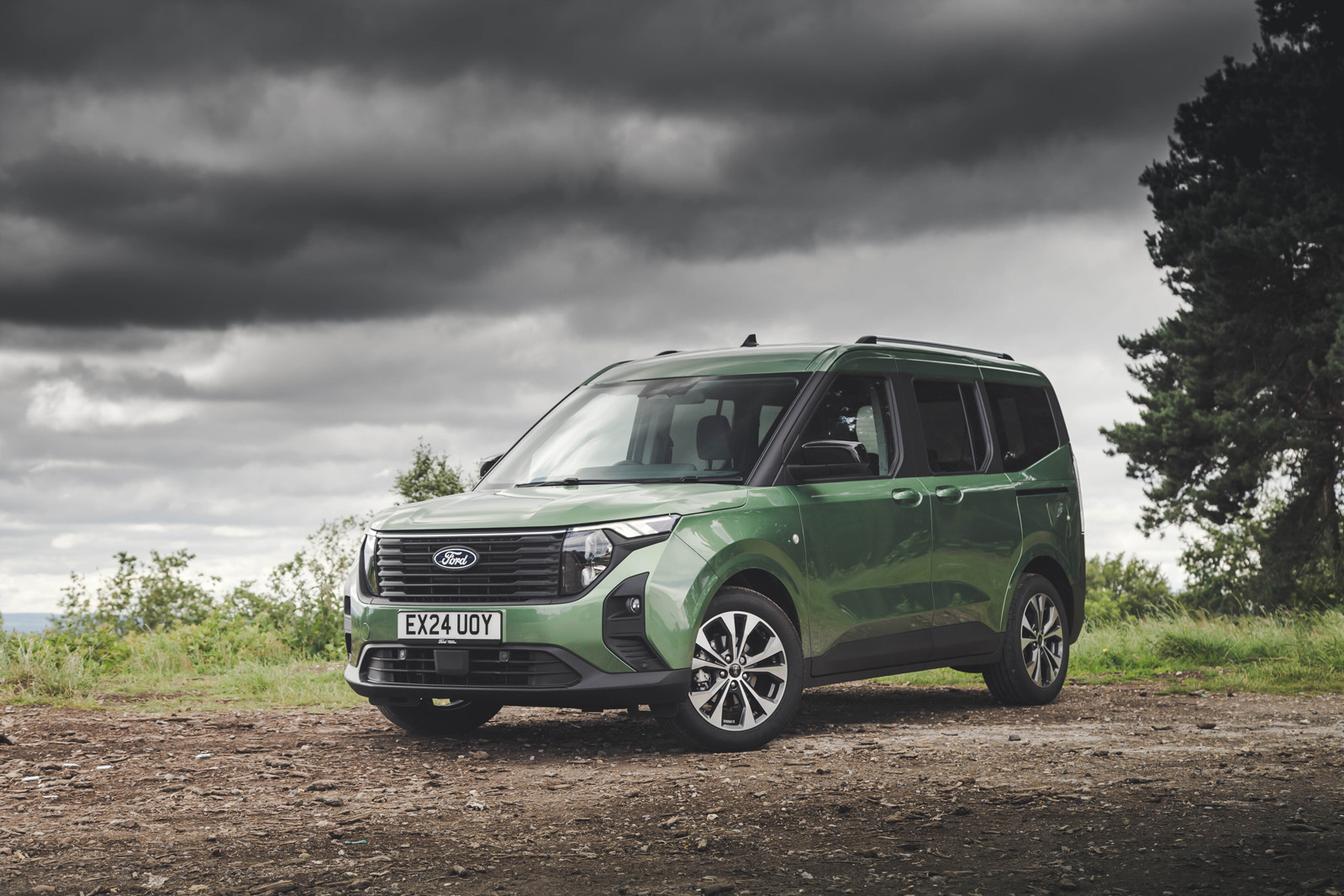The Tourneo Courier is one of those cars that feels like it could have been designed for Victorian-era top hat wearers. Up front, there really is a lot of fresh air above your scalp, which Ford makes use of via a handy roof storage console.
But even with that in place, the car’s driving position can feel oddly low with the seat adjusted all the way down, which isn’t a common characteristic of utility cars like this. It’s the first sign that Ford didn’t want this car to seem like every other ‘monocab Tardis’ to drive. Ironically enough, though, even taller testers said they preferred the driving position with the seat cushion ratcheted up at least halfway through its travel, to improve their relationship with the controls and all-round visibility.
The front doors feel particularly large, closing with a slightly reverberant whump. And the driving environment, once you are in, is simple and functional. It seems quite cheap in places but isn’t entirely bare or plain.
Ridged mouldings are used to create tactile interest, and fairly effectively, but if you lean a little on the interior door consoles with your knees, for example, they creak and flex. The primary footwell mouldings, meanwhile, have raised, proud edges on which you can snag your feet as you get in and out.
A digital instrument panel and free-standing infotainment screen sit atop the dashboard, concealing a wide storage cubby in which you can stash things you need regular access to. There’s a second, smaller one like it just ahead of the front passenger and a document holder built into the side of the passenger footwell.
The second-row seats mirror the abundance of head room up front and follow up with leg room roughly on a par with a mid-sized family car (typical rear leg room 740mm; Seat Ateca 710mm; Volkswagen Tiguan up to 770mm).
Those back seats are a little short, flat and hard in the cushions, they don’t slide fore and aft, and they’re not fully removable (as they are in a Dacia Jogger, Skoda Karoq, VW Caddy, or Ford’s larger Tourneo Courier models), which may disappoint some. But they do fold and tumble all the way forwards to maximise loading space to as much as 2162 litres, so, despite its compact size, the Courier certainly doesn’t fall short of outright carrying space.
Neat added-practicality features in the boot are limited to a storage cubby built into the side panel intended for muddy boots and a couple of smaller trays for loose items opposite. It’s scant evidence of imagination compared with the drop-down roof consoles, sliding hooks and organisers that rivals offer, admittedly at extra cost. Moreover, the mouldings chosen here look especially cheap and like they would mark easily.
Multimedia
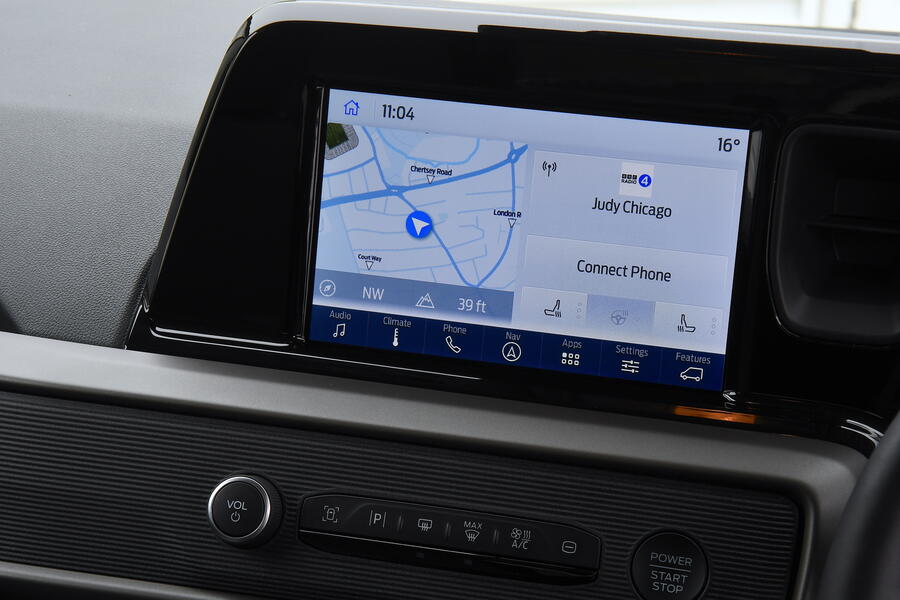
Ford’s standard infotainment system for the Tourneo Courier doesn’t include a factory navigation system (the one on our Titanium-level test car was optional) but does include wireless smartphone mirroring and a wireless charging pad – which, given most owners would prefer to use their phone’s software anyway most of the time, is acceptable enough. The system comes with two wired USB ports in each row for charging other things, plus 12V outlets in both the front row and the boot.
The touchscreen is fairly easy to navigate, thanks to some well-chosen physical shortcut keys underneath it. That Ford’s nav bar disappears when you switch to Apple CarPlay is a little annoying, but the size of the screen probably made it necessary.
The heater control is mostly through the touchscreen, but we would have preferred permanent physical blower controls. Although it is a little more involved and distracting than it absolutely needs to be, this is still a fairly simple, navigable system that feels about right for the car.



